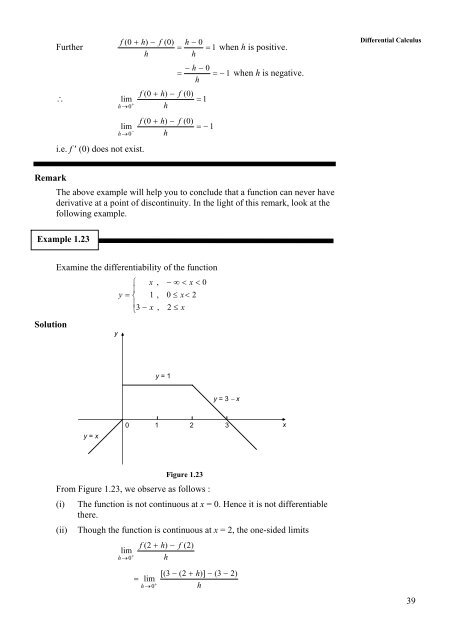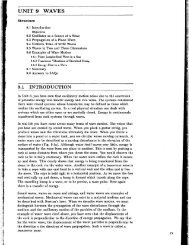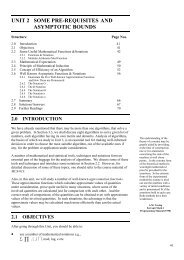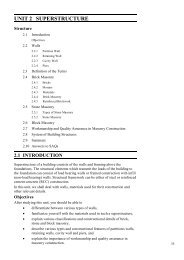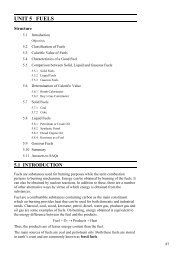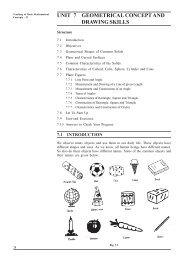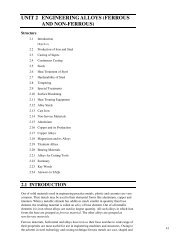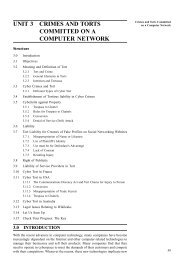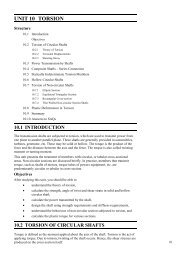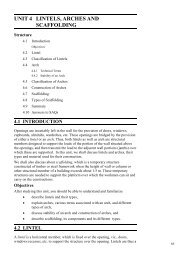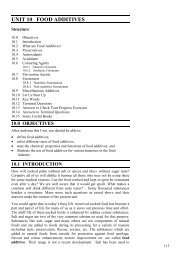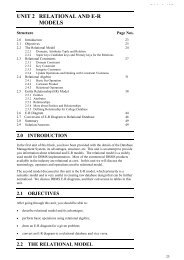unit 1 differential calculus - IGNOU
unit 1 differential calculus - IGNOU
unit 1 differential calculus - IGNOU
Create successful ePaper yourself
Turn your PDF publications into a flip-book with our unique Google optimized e-Paper software.
Remark<br />
f ( 0 + h)<br />
− f ( 0)<br />
h − 0<br />
Further = = 1 when h is positive.<br />
h<br />
h<br />
f ( 0 + h)<br />
− f ( 0)<br />
∴ = 1<br />
lim<br />
+<br />
h →0 h<br />
f<br />
( 0<br />
+ h)<br />
− f<br />
lim<br />
−<br />
h →0 h<br />
i.e. f ′ (0) does not exist.<br />
− h − 0<br />
= = − 1 when h is negative.<br />
h<br />
( 0)<br />
= − 1<br />
The above example will help you to conclude that a function can never have<br />
derivative at a point of discontinuity. In the light of this remark, look at the<br />
following example.<br />
Example 1.23<br />
Solution<br />
Examine the differentiability of the function<br />
y = x<br />
y<br />
⎧ x ,<br />
⎪<br />
y = ⎨ 1 ,<br />
⎪<br />
⎩3<br />
− x ,<br />
y = 1<br />
− ∞ < x < 0<br />
0 ≤ x<<br />
2<br />
2 ≤ x<br />
y = 3 − x<br />
0 1 2 3<br />
Figure 1.23<br />
From Figure 1.23, we observe as follows :<br />
(i) The function is not continuous at x = 0. Hence it is not differentiable<br />
there.<br />
(ii) Though the function is continuous at x = 2, the one-sided limits<br />
lim<br />
+<br />
h →0<br />
=<br />
f<br />
( 2 + h)<br />
− f ( 2)<br />
h<br />
lim<br />
+<br />
h →0<br />
[( 3<br />
− ( 2 + h)<br />
] − ( 3 −<br />
h<br />
2)<br />
x<br />
Differential Calculus<br />
39


